NIL
The House v. NCAA settlement is officially approved. What does it mean for Duke and college sports?
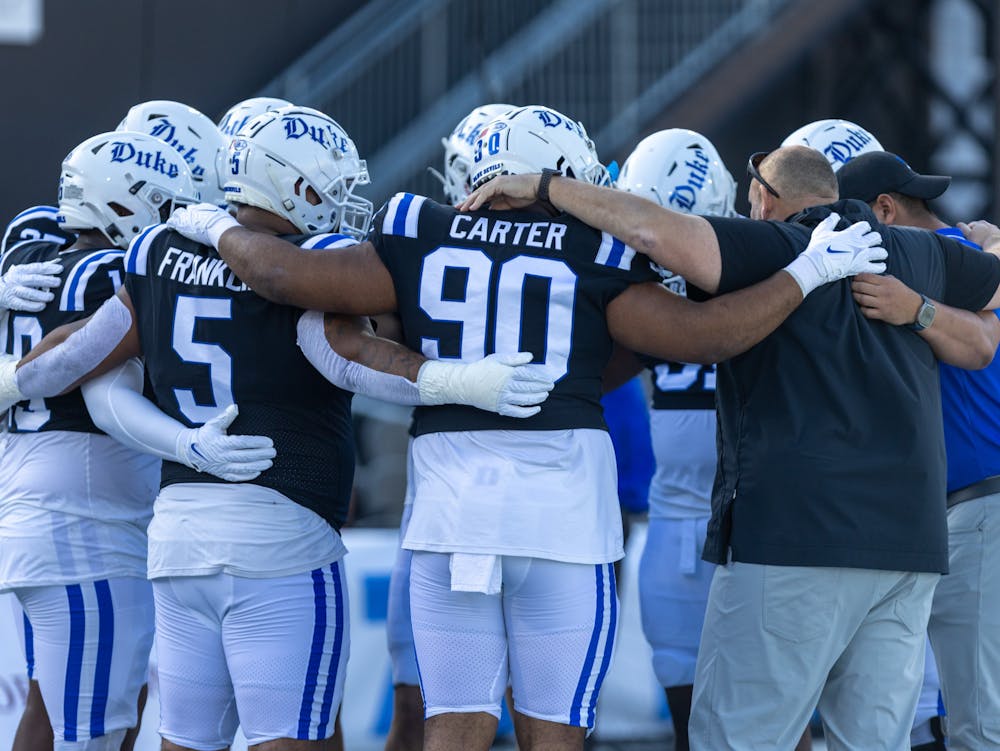
Judge Claudia Wilken has finalized the consequential settlement that will fundamentally change college sports.
More than a year after the two sides in the House v. NCAA case voted to settle, Wilken approved the revised terms Friday evening. Schools will be able to directly pay players from their athletic department budgets for the 2025-26 school year, also known as revenue sharing.
Ever since student-athletes began profiting off their name, image and likeness (NIL) in 2021, the sport has faced a roller coaster of litigation and uncertainty. NIL money has already transformed college sports, and this approval further revolutionizes the relationship between athletes and schools. Athletes can now earn financial benefits for their performance in three ways: scholarships, NIL deals and revenue sharing.
Duke athletics did not immediately respond to The Chronicle’s request for comment on the settlement.
House v. NCAA settlement details
The settlement resolves three antitrust cases against the NCAA. Former Duke football captain DeWayne Carter is one of three plaintiffs in Carter v. NCAA, and former Arizona State swimmer Grant House is the namesake plaintiff in the main case.
The athletes argued that the NCAA, through control of TV markets and NIL, was illegally limiting their true playing value, which they said was more than scholarships and education funding. The NCAA and power conferences — ACC, SEC, Big Ten, Big 12 and Pac 12 — settled with the plaintiffs in May 2024.
The two main parts of the settlement are payments to past players and a framework for paying those of the future. More than 88,000 former student-athletes have filed claims for the back-pay portion of the case, with $2.8 billion from the NCAA and power conferences intended to compensate players from 2016-21 who were not able to profit off of their name, image and likeness.
The second and more consequential part of the settlement, revenue sharing, allows schools to use their athletic department budgets to directly pay players. Currently, schools can only work with collectives, independent booster-funded organizations that raise money from the respective team’s fans and corporations. Collective money pays players, not the schools.
But now that the settlement is officially approved, schools can use up to roughly $20.5 million of their TV revenue, ticket sales and merchandise, among other things, to directly pay student-athletes. That number is equivalent to 22% of the average power conference school’s athletic department revenue. It will also increase over the next 10 years and will likely eclipse $30 million by the 2034-35 season. For Duke’s last reported athletics year of 2023-24, the total revenue figure was $166.8 million, the 28th-highest in the nation.
A good comparison to understand revenue sharing is professional sports leagues’ salary cap. For instance, the NBA’s salary cap in the 2024-25 season was roughly $140.6 million. It bars teams from spending over this amount (although in the NBA, teams can pay luxury taxes and have exceptions to work around the figure). The revenue-sharing structure will be in the same format; teams get the roughly $20.5 million amount to pay out, but they are limited to that cap, and can choose to pay the full amount or less.
“I think that all we’re looking for is consistency, and not [the guidance] changing every week, or every two weeks, or every month,” said Terrell Smith, Duke’s assistant director of athletics and NIL strategy, prior to the approval. “We will know … how we need to operate, at least for the next year.”
He underscored the stability the case provides and the importance of guidance, because at the end of the day, the majority of the athletic departments are trying to play by the rules and navigate the ever-changing landscape.
“You have to play the card that you were dealt,” Smith said. “But if after every time you put a card down, you’ve got to reshuffle the deck and play again, it’s like the game is never over.”
Athletic departments will face tough conversations around how to fund their vast array of varsity sports, especially the “non-revenue sports,” those excluding football and basketball. In the latest Equity in Athletics Disclosure Act report, more than 70% of Duke’s athletic department revenues came from football and men’s basketball in the 2023-24 season.
New enforcement agency: The College Sports Commission
In a significant change, the NCAA will no longer have enforcement power on the rules of the settlement. A new College Sports Commission (CSC) will be the final arbitrator to enforce the salary cap-esque structure from revenue sharing to ensure that schools don’t exceed their allocated budgets to directly pay players. They will help LBi Software, a New York technology company, to ensure compliance with revenue sharing cap and also have the power to “impose such fines, penalties or other sanctions as appropriate” on schools who break the rules.
The CSC will be headed by a CEO chosen by power conference commissioners. MLB executive Bryan Seeley was hired Friday night for the position due to his investigative and legal experience. Power conference commissions will make up a board that Seeley will report to. The NCAA will still address issues surrounding academics and eligibility, but the CEO will largely handle the terms of the settlement.
Ed Tiryakian, a lecturing fellow of markets and management studies at Duke and a former agent of Blue Devil men’s basketball legend Christian Laettner, believes that the new enforcement mechanism is “great on paper” but “tough in person.” That said, fresh, business-oriented leadership could be a positive step in the innovation of college sports.
“I think the sea change that I hope happens [is] that the commission says business first, framework second,” Tiryakian said. “I think a commission says, ‘Let’s have a business development person on our commission … How do we monetize [college sports], but let’s put the rules in place that makes everyone happy.’”
Get The Chronicle straight to your inbox
Sign up for our weekly newsletter. Cancel at any time.
Roster limits
The biggest point of contention between Wilken and approving the settlement on the final hearing date in April was roster limits. The settlement removes scholarship limits to give the NCAA more antitrust protection and pave the way for revenue sharing. The replacement is roster limits, so big schools can’t theoretically hoard talent with immense NIL and revenue sharing sums. Schools can give as many or as few scholarships as they want, but they can’t hold more than a certain amount on a roster (105 for football, 15 for basketball, 34 for baseball, 25 for softball). This link includes the full list of roster limits.
However, Wilken was concerned about current student-athletes who might have their spots removed with roster limits. She proposed “grandfathering in” the roster limits to protect current athletes. The conferences and attorneys took her suggestion and came back with a revised settlement proposal, which says that athletes who were on a 2024-25 roster and high school recruits committed for the 2025-26 season do not count towards a school’s roster limits through their eligibility expiration.
As part of the compromise, schools are not forced to retain these players they already cut in anticipation of the settlement, but these athletes can transfer, maintain eligibility and not count towards a roster spot on any team.
NIL deals, Deloitte and collectives
Another part of the settlement is regulation on NIL deals. Some NIL deals — like Cooper Flagg’s with Gatorade — are direct sponsorship deals with companies. Others are with the school’s collectives, the booster-funded independent organizations that raise money from fans and alumni, and they connect student-athletes with NIL opportunities. The collectives typically partner with local businesses to facilitate player event appearances and social media posts.
Duke’s main collective is the Durham Devils Club, providing NIL deals for a vast array of Blue Devil athletes. Absent from this list is basketball, which earns funding from the “One Vision Futures Fund,” a low-profile non-profit started by Duke alums Jeff Fox, Dan Levitan and Steve Duncker.
NIL deals will still occur and will not be capped, unlike revenue sharing. But in hopes for further transparency, the settlement requires any NIL deal past $600 to be fully disclosed.
Accounting firm Deloitte and the College Sports Commission CEO will operate “NIL Go,” a clearinghouse to ensure NIL deals over $600 are of “market value,” so they don’t extend beyond what the player actually brings to the team. Although the process is not entirely finalized, Deloitte will look at a database of comparable past NIL deals to define what is market value. They will also make sure the payor has a valid business purpose for the deal.
These will mostly affect player deals with boosters and collectives. If Deloitte rejects a deal, players have a chance to resubmit it with the suggested modifications. If a deal is rejected a second time, the CSC, CEO and a court process will assess the deal’s validity.
It’s important to note that no NIL deal is supposed to be “pay for play,” meaning there should be some scope of work for the athlete outside of playing — whether it be social media posts, community service, event appearances or speaking engagements.
Josh Cox, director of operations for the Durham Devils Club, says this new regulation model is a positive step, but worries about its application due to the sheer number of deals coming in and because market value is tough to define for any individual athlete.
“In theory, I love it. In practicality, I think it’s going to be virtually impossible to do it properly,” Cox said. “I do believe that it’s beneficial. I do believe that it is a way to curb a little bit of this inflation that’s been going on for the last two years.”
Where do things go from here?
The terms of the settlement begin July 1, and with the approval, college athletes will receive money for the 2025-26 season. A completely new dimension to college sports is on the horizon. Schools have a choice whether to opt in or opt out to the settlement, and many smaller conference teams may choose to not use revenue sharing.
There will likely be further litigation on both revenue sharing and the legality of the Deloitte NIL clearinghouse. Additionally, there are increasing questions about the role revenue sharing plays within Title IX, a 1972 law preventing sex-based discrimination in education programs.
The settlement approval doesn’t provide any guidance on how schools should distribute revenue sharing funds in accordance with Title IX, arguing this is an antitrust suit. It states that there is nothing in the settlement to “prevent or prohibit schools from distributing benefits and compensation … in a manner that complies with Title IX,” but also that “class members will have the right to file lawsuits arising out of those violations.”
Even with the question marks, the approval provides a welcome sense of direction for athletic departments in a field that is often ever-changing and unclear.
“There’s always time for people to be bad actors, but I’ll say 99.9% of the people are trying to do everything right,” Smith said. “We just need to know, or would like to know, what the rules are, and then we’ll play within those rules.”
At the same time, while well-resourced schools may be positioned to take on this nascent world, small conference teams still could feel left behind. Tiryakian framed it as a “major vs. minor league future,” with the power conferences maintaining the majority of high-quality talent and being able to lure in the rest via the transfer portal, leaving minor conferences akin to minor league baseball teams.
“I think we’ve entered a brave new world that’s a bit concerning for college athletics,” Tiryakian said. “I think you’re going to see a big segregation in terms of the haves and have-nots, and that’s what is worrisome to me about where we’re at in terms of the arms race. There’s just gonna be a lot of people who drop out of the arms race.”
Whatever may be coming, Smith is bullish about the future of Duke in the NIL and revenue sharing space, especially with the infrastructure already put into place.
“I really think that Duke, we always find a way when we get in the space, to make sure this is better than what anyone else is doing,” Smith said. And I think once we know the guidelines, we’ll find a way to make it the best for our student-athletes.”
Another key development is a binding agreement to the settlement that power conferences have reportedly urged their members to sign. This would force teams in each conference to comply with the settlement terms and waive their rights to sue the CSC. This would help settle any discrepancy between state NIL law and the settlement. If teams have disputes with the CSC, they would use a third-party arbitration process rather than taking the commission to court. This comes after Tennessee Gov. Bill Lee signed a bill in May protecting state schools from enforcement penalties in the settlement.
There is also talk of the need for federal intervention. In April, a host of college administrators, conference commissioners, coaches and players traveled to Capitol Hill to lobby elected officials for greater regulation on NIL. Specifically, they lobbied for standardization of NIL regulation, antitrust protection for them and the NCAA to prevent future lawsuits. A bipartisan group of U.S. senators have discussed legislation on compensation in college sports, but nothing has come to fruition.
President Donald Trump reportedly was planning to create a college sports commission, but the White House announced its pause May 22. Details of its role and scope were limited, but it planned to study the regulation of collectives, the transfer portal, the various NIL rules across states and the implications of Title IX within the new revenue sharing framework. The hope is that a growing push for legislation will help bring more clarity in college sports.
Abby DiSalvo contributed reporting.

| Audience Engagement Director
Ranjan Jindal is a Trinity senior and audience engagement director of The Chronicle’s 121st volume. He was previously sports editor for Volume 120.
NIL
Arch Manning takes NIL pay cut to boost 2026 Texas Football roster
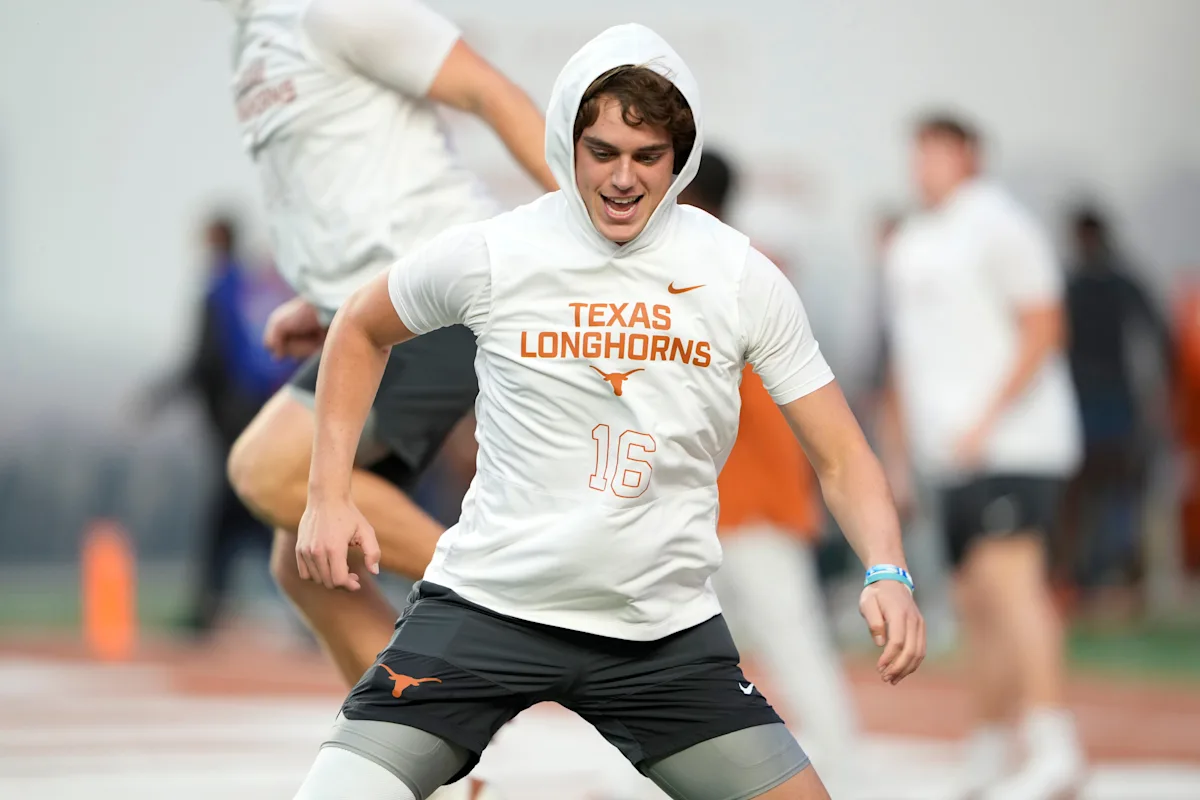
There are plenty of examples of a star in pro sports taking less money in order to help the overall roster. But it isn’t something that’s hit college football yet … until now, thanks to Arch Manning. Manning has asked to take a reduced portion of the Longhorns’ direct payout pool.
Manning’s aim at taking less NIL funds is to help improve the roster around him. Just like Patrick Mahomes, who regularly gives up millions to help the Kansas City Chief’s roster. Tom Brady did it with New England. Dirk Nowitzki, Tim Duncan, LeBron James, Kevin Durant, Jalen Brunson, Aaron Rodgers and Ben Roethlisberger have all helped the rosters around them by taking less.
Advertisement
In the pros, there are salary caps to negotiate. While college has no salary cap (yet), there is a finite amount in the NIL house pool. Texas can only spend what it has available. And while that pool is one of the biggest in the nation, Texas still follows a budget.
No doubt, Manning will be hoping the Texas coaching staff uses some of the freed up football revenue sharing funds on the offensive line. The line struggled in front of Manning all season and certainly inhibited his development early in the season.
Two offensive linemen are gone after the Citrus Bowl and Texas might lose a third. Left tackle Trevor Goosby was named first-team All-SEC is now contemplating going pro. Running back Jadan Baugh from Florida is also on Texas’ radar. The talented RB won’t be cheap.
Of course, it’s not like Manning will starve. The redshirt sophomore has one of the highest NIL valuations in nation. Manning has NIL deals with Red Bull, Panani, Uber and Warby Parker. Manning made north of $3.5 million in NIL deals in 2025, according to the Houston Chronicle.
Advertisement
With a big name that attracts major brands, Manning doesn’t need his big deals supplemented. But most college athletes are paid by the common pool of funds. Manning frees up some of that money for transfers.
This article originally appeared on Longhorns Wire: Manning Pay Cut: Texas QB asks for less NIL money to help boost roster
NIL
Top 5 transfer portal landing spots for TCU quarterback Josh Hoover
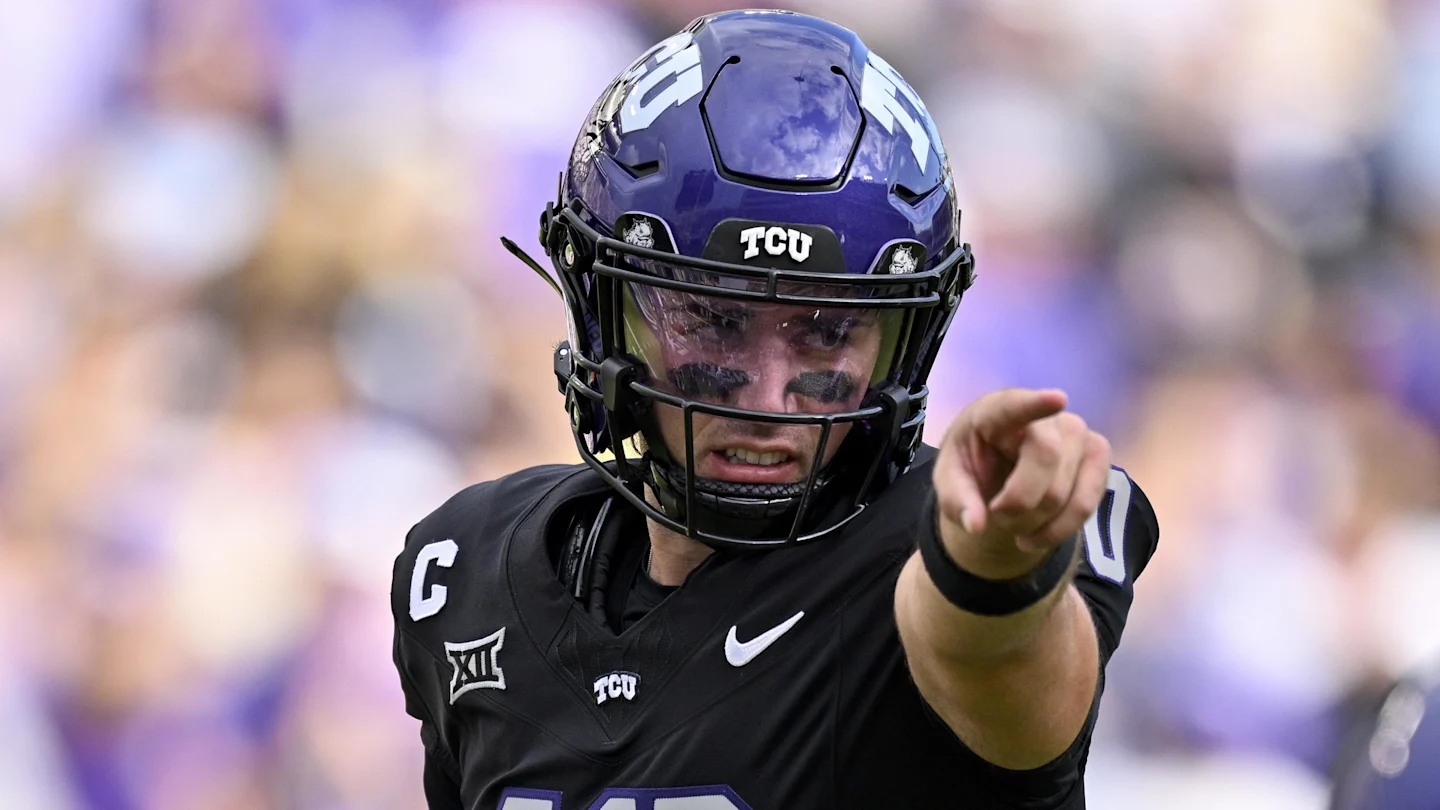
The NCAA Transfer Portal claimed another big name on Thursday night.
TCU star quarterback Josh Hoover has announced he intends to move on from the program. Hoover spent the last four seasons with the Horned Frogs, taking over as the starter midway through the 2023 campaign and putting up big numbers in each of the last two years.
In 36 career games, Hoover has completed 771/1183 passes for 9,629 yards with 71 touchdowns to 33 interceptions. He added eight more scores on the ground. There’s a very real likelihood that Hoover’s the most productive quarterback returning to the sport in 2026.
Hoover ranks in the top 5 in TCU program history in touchdown passes and total offense. He’s expected to be a coveted option in the portal.
Where are five landing spots that make sense for Hoover?
Indiana Hoosiers

Back in the College Football Playoff with a different starter for the second consecutive season, Indiana has put together one of the most impressive runs in the sport since Curt Cignetti took over the program.
The undefeated Hoosiers produced their first Heisman Trophy winner in school history last weekend as star quarterback Fernando Mendoza ran away with the award. Mendoza has another season of eligibility remaining, but is projected to be a top selection in the 2026 NFL Draft.
Indiana has already been linked to Hoover, per CBS Sports’ Chris Hummer.
Miami Hurricanes

Miami has lived in the transfer portal over the past few years, investing plenty of time and money into building a contender for Mario Cristobal. The moves finally worked out in 2025 as a massive financial commitment to secure Carson Beck from Georgia helped power the Hurricanes to the playoffs.
Though the conclusion of the 2024 season was a disappointment, former Miami quarterback Cam Ward was developed into the No. 1 pick in the most recent NFL Draft. Beck will likely get a shot at the professional level as well.
With little proven depth on the roster, it makes sense to bring in another experienced quarterback like Hoover to keep the Hurricanes on the right track. Miami has proven it’s willing to pay up.
Oregon Ducks

Oregon is a known quarterback factory, sending former stars such as Marcus Mariota and Justin Herbert to the NFL. That hasn’t changed since Dan Lanning took over the program in 2022.
The Ducks have had a quarterback drafted in back-to-back years, with Bo Nix going in the first round in 2024 and Dillon Gabriel being selected within the top-100 picks in 2025. Lanning could do it again next April with Dante Moore, who is nearing the end of a career year.
If Moore does leap to the professional level, Hoover would be a solid fit. Nix, Gabriel, and Moore all began their college careers at different schools and later transferred to Oregon, a similar path Hoover is embarking on.
Texas Tech Red Raiders

Suiting up for a playoff contender is pretty cool. Having a chance to win championships and staying home in the process might be even cooler.
Texas Tech has firmly entrenched itself as a program to reckon with in the modern age of the sport. The Red Raiders have plenty of money, and they’ve shown they’re willing to use it to pull in elite talent from the transfer portal and high school ranks.
With Behren Morton exhausting his eligibility following the playoff run, Texas Tech has to decide if it wants to turn the program over to another transfer or a homegrown talent like Will Hammond.
Either way, Hoover is from Texas and he’s already in the state.
Houston Cougars

An outlier among four other programs that have a chance to win it all, Houston is on the come-up. The Cougars haven’t been shy about writing checks, evidenced by the program signing five-star quarterback Keisean Henderson during the Early Signing Period.
Redshirt junior starter Conner Weigman does have one season of eligibility remaining and has stated he intends to return next season. Decisions are quick to change in this era, so never say never.
Would Houston bring in Hoover while Henderson develops for a season? Or should the program stick with Weigman as a veteran leader for Henderson?
Weigman just joined the program as a transfer last year. He was fine, but unspectacular this fall, and an upgrade could help the Cougars break their ceiling.
Read more on College Football HQ
• $45 million college football head coach reportedly offers Lane Kiffin unexpected role
• Paul Finebaum believes one SEC school is sticking by an ‘average’ head coach
• SEC football coach predicts major change after missing College Football Playoff
• Predicting landing spots for the Top 5 college football transfers (Dec. 17)
NIL
South Carolina Upstate visits Youngstown State after Carroll’s 31-point outing

South Carolina Upstate Spartans (8-6) at Youngstown State Penguins (7-5, 2-1 Horizon League)
Youngstown, Ohio; Saturday, 1 p.m. EST
BOTTOM LINE: Youngstown State hosts South Carolina Upstate after Cris Carroll scored 31 points in Youngstown State’s 80-77 overtime loss to the Robert Morris Colonials.
The Penguins are 4-0 on their home court. Youngstown State scores 80.2 points and has outscored opponents by 10.9 points per game.
The Spartans are 2-5 on the road. South Carolina Upstate is fifth in the Big South scoring 79.6 points per game and is shooting 46.2%.
Youngstown State averages 10.4 made 3-pointers per game, 3.8 more made shots than the 6.6 per game South Carolina Upstate gives up. South Carolina Upstate has shot at a 46.2% rate from the field this season, 3.3 percentage points greater than the 42.9% shooting opponents of Youngstown State have averaged.
TOP PERFORMERS: Carroll averages 3.0 made 3-pointers per game for the Penguins, scoring 16.4 points while shooting 48.6% from beyond the arc. Rich Rolf is averaging 10.8 points over the last 10 games.
Mason Bendinger is scoring 16.1 points per game and averaging 3.1 rebounds for the Spartans. Carmelo Adkins is averaging 1.9 made 3-pointers over the last 10 games.
LAST 10 GAMES: Penguins: 6-4, averaging 81.3 points, 33.6 rebounds, 15.2 assists, 9.1 steals and 3.3 blocks per game while shooting 49.6% from the field. Their opponents have averaged 67.7 points per game.
Spartans: 5-5, averaging 75.4 points, 33.5 rebounds, 14.1 assists, 6.1 steals and 5.0 blocks per game while shooting 43.9% from the field. Their opponents have averaged 73.2 points.
___
The Associated Press created this story using technology provided by Data Skrive and data from Sportradar.
NIL
Arch Manning agrees to reduced NIL share to help Texas build roster
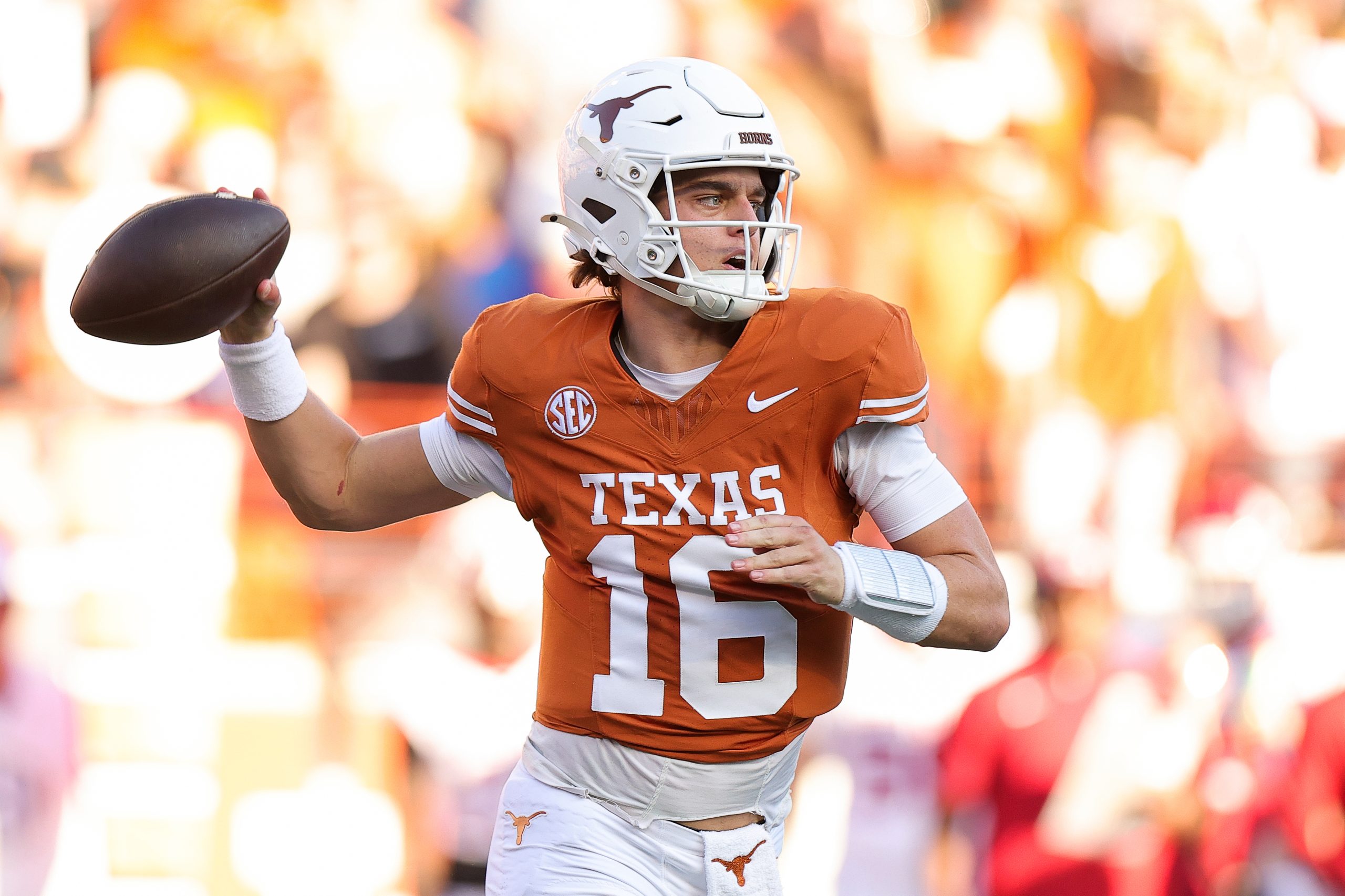
In a college football world where NIL numbers keep climbing, Arch Manning is going the other way.
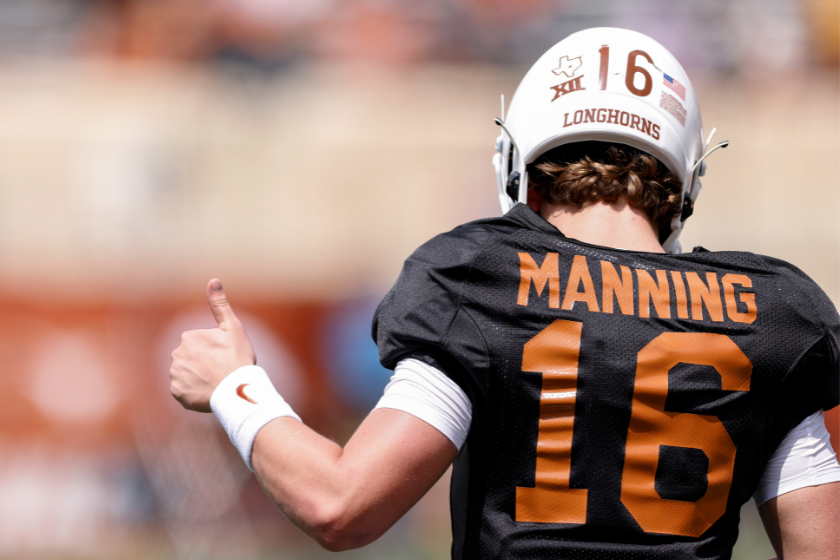
Photo by Tim Warner/Getty Images
The Texas quarterback has agreed to take a reduced share from the Longhorns’ revenue-sharing pool for the 2026 season, according to Justin Wells of Inside Texas. Manning was entitled to a full portion of the program’s revenue cap but opted to scale it back in an effort to give Texas more flexibility to strengthen its roster.
It is a move that stands out in the current landscape. It is also one Manning can afford to make.
Manning remains one of the most marketable players in college football and has a long list of endorsement deals that will continue to pay handsomely. Even with less money coming directly from the school, he is still expected to earn millions in 2026.
This is not the first time he has shown restraint, either. Manning has consistently been selective with his NIL opportunities since arriving in Austin.
The timing matters. The 2026 season is widely expected to be Manning’s last at Texas before he makes the jump to the NFL. From that perspective, the decision is straightforward. He wants the best possible team around him for one more run at a national championship.
Manning has already demonstrated his commitment to the program. He waited his turn behind Quinn Ewers for two seasons without entertaining a transfer and now is willing to sacrifice a portion of his compensation for the good of the roster.
On the field, the growth showed. After a shaky start in 2025, Manning finished with 2,942 passing yards and 24 touchdowns. Texas rebounded from a 3-2 opening to win six of its final seven games, punctuated by a decisive win over Texas A&M.
It is not a common move. It is a very Arch Manning one.
NIL
Miami WR Malachi Toney inks NIL deal with Hellstar

Ahead of the College Football Playoff opener, Malachi Toney added a notable NIL deal. The Miami wide receiver has inked a partnership with apparel company Hellstar.
Toney is Hellstar’s first NIL athlete, the Los Angeles-based brand said in an Instagram post. He became a crucial part of the Hurricanes’ offense during the regular season, helping lead the program to a College Football Playoff appearance as the last team in the field.
SUBSCRIBE to the On3 NIL and Sports Business Newsletter
It was part of a decorated freshman year for Toney, who’s emerging as one of the top young stars in the sport. Repped by NETWORK, he has a $878,000 On3 NIL Valuation.
“We are so proud to announce our first Hellstar Sports College Athlete NIL signing – Malachi Toney,” Hellstar wrote in its announcement. “We had the privilege to coach @malitoney10 while he was apart of our high school 7 on 7 program, so now seeing him shine on the collegiate level we couldn’t be more proud.
“We will continue to do our part to help these young athletes stay on the right path, and shine their light to the rest of the world. From Liberty City to the stars!”
It’s the latest notable NIL deal for Toney amid his freshman season. He also secured a partnership with Leaf Trading Cards in October.
More on Malachi Toney’s freshman season
Through his freshman year at Miami, Malachi Toney emerged as a top target for Carson Beck. He led the Hurricanes with 84 receptions for 970 yards, and his seven touchdown catches put him atop the ACC. Toney also added 89 rushing yards this year, as well as a rushing touchdown against Louisville.
Those numbers helped Toney become an On3 True Freshman All-American this year. In addition, he was a central figure in Miami’s run to the College Football Playoff.
“Toney’s quickness and playmaking instincts make him dangerous after the catch. He accounted for 350 yards after the catch with an average depth of target of 6.6, according to Pro Football Focus,” On3 | Rivals’ Charles Power wrote. “Whether working out of the slot or moving around the formation, the South Florida native has proven nearly impossible to contain. His playmaking ability was pivotal to Miami’s playoff push as he became the focal point of the Hurricanes’ passing attack.
“Given his play as a true freshman, it’s safe to say the Fort Lauderdale American Heritage product will enter next season as one of college football’s premier wide receivers. Toney’s performance as a true freshman is even more impressive considering that he should still be in high school, having reclassified into the 2025 cycle late in the recruiting process.”
NIL
Arch Manning taking pay cut after first Texas season didn’t go as planned
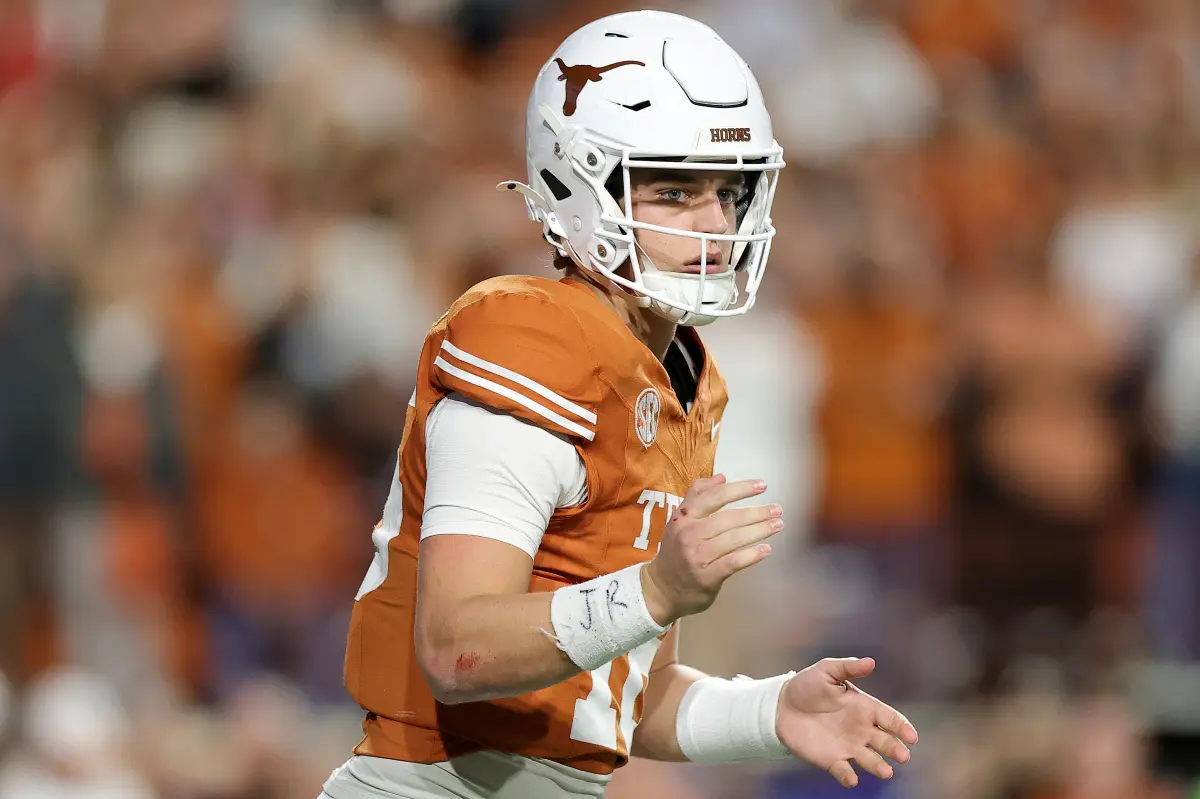
Arch Manning is taking a pay cut.
The Texas quarterback agreed to take a reduced share of the team’s revenue-sharing pool “as part of an effort to help the Longhorn football program do whatever it takes to support a 2026 championship run,” according to On3’s Justin Wells.
The savings “could be used on transfer portal talent or as part of retention efforts” for the Longhorns, per Wells.
This season, athletic programs were capped at $20.5 million in revenue-sharing, although that number is likely to increase next season and beyond.

Manning, the nephew of NFL icons Peyton and Eli Manning and the grandson of legendary quarterback Archie, is one of the most marketable athletes in college sports.
On3 currently gives Manning an NIL valuation of $5.3 million, which leads all student-athletes.
Although he is getting less money from Texas, Manning still holds NIL deals with brands like Red Bull, Uber and EA Sports, among others.
However, Manning sometimes struggled in a season that started with Heisman hype and the Longhorns ranked No. 1 in the nation.
Texas finished the season 9-3 and out of the College Football Playoff, a disappointing midseason loss against a poor Florida team all but ended their chances of being in the 12-team field.
Manning’s season was underwhelming as well, throwing for 2,942 yards with 24 touchdowns and seven interceptions.
The news comes after Manning’s father, Cooper Manning, told ESPN earlier this week that his son would return to the Longhorns in 2026 for his junior season despite previously mulling entering the 2026 NFL Draft.
“Arch is playing football at Texas next year,” Cooper said.
Texas finished No. 13 in the end of season rankings and will be on the sidelines for the College Football Playoff, which kicks off on Friday.
-

 Motorsports1 week ago
Motorsports1 week agoSoundGear Named Entitlement Sponsor of Spears CARS Tour Southwest Opener
-

 NIL3 weeks ago
NIL3 weeks agoBowl Projections: ESPN predicts 12-team College Football Playoff bracket, full bowl slate after Week 14
-

 Motorsports2 weeks ago
Motorsports2 weeks agoDonny Schatz finds new home for 2026, inks full-time deal with CJB Motorsports – InForum
-

 Rec Sports2 weeks ago
Rec Sports2 weeks agoHow Donald Trump became FIFA’s ‘soccer president’ long before World Cup draw
-
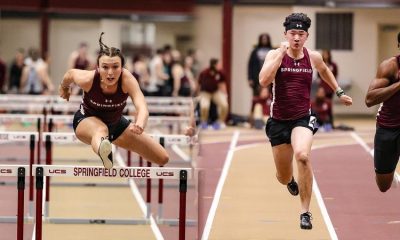
 Sports3 weeks ago
Sports3 weeks agoMen’s and Women’s Track and Field Release 2026 Indoor Schedule with Opener Slated for December 6 at Home
-

 Rec Sports2 weeks ago
Rec Sports2 weeks agoBlack Bear Revises Recording Policies After Rulebook Language Surfaces via Lever
-

 Motorsports3 weeks ago
Motorsports3 weeks agoMichael Jordan’s fight against NASCAR heads to court, could shake up motorsports
-

 Rec Sports2 weeks ago
Rec Sports2 weeks agoDavid Blitzer, Harris Blitzer Sports & Entertainment
-

 Motorsports2 weeks ago
Motorsports2 weeks agoJR Motorsports Confirms Death Of NASCAR Veteran Michael Annett At Age 39
-

 Motorsports2 weeks ago
Motorsports2 weeks agoRick Ware Racing switching to Chevrolet for 2026


































